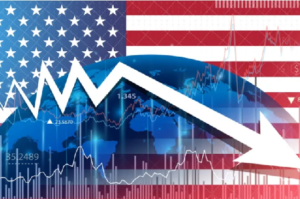Pressure on the U.S. Economy
In September, a measure of wholesale prices in the United States exceeded expectations, indicating that inflation pressures continue to simmer in the U.S. economy. According to the Labor Department’s report, the Producer Price Index (PPI), which measures the costs that producers incur for finished goods, rose by 0.5% for the month, exceeding the Dow Jones estimate of a 0.3% increase. While this figure is lower than the 0.7% increase recorded in August, it highlights that inflation is far from under control.

Inflationary Pressures Persist
The unexpected rise in the PPI, especially when examining the core PPI that excludes food and energy, underlines the persistence of inflationary pressures in the U.S. economy. The core PPI was up 0.3% in September, against the forecast for a 0.2% increase. Excluding food, energy, and trade services, the index rose 0.2%, in line with estimates. These figures indicate that inflation is not only present but also broad-based.
However, it is essential to note that the financial markets responded relatively mildly to the PPI release. Stock futures showed a slight dip, and Treasury yields moved off their lows, although they remained negative on most longer-duration issues. This subdued market reaction might be attributed to a belief that this data does not significantly alter the overall inflation landscape, as the Federal Reserve’s more closely watched Consumer Price Index (CPI) is set to be released shortly.
Read more: Walgreens Appoints Tim Wentworth, Seasoned Healthcare Executive, as Next CEO
Driving Factors Behind the PPI Increase
The primary drivers behind the surge in the PPI were prices for final-demand goods, which increased by 0.9% during the month. In contrast, services recorded a more modest increase of 0.3%. When examining specific goods, much of the price increase was due to the substantial rise in gasoline prices, which jumped by 5.4%. Food prices also posted a noticeable gain, increasing by 0.9%. The broader energy price category experienced a 3.3% increase.
However, when looking at core goods, which exclude food and energy, the increase was only 0.1%. This figure reflects a normalization in supply chains, indicating that not all sectors are experiencing significant price pressures.
In the services category, prices for final demand services, excluding trade, transportation, and warehousing, increased by 0.3%. Final demand for trade services rose by 0.5%. Notably, the costs for deposit services at commercial banks surged by 13.9%.
Year-Over-Year Inflation Increase
On a year-over-year basis, the headline PPI increased by 2.2%, marking the most substantial move since April. In June, the 12-month pace had slowed to as low as 0.2%, but it has been on the rise ever since.
These statistics suggest that sticky inflation persists in the U.S., which is a cause for concern. Persistent inflation can lead to higher interest rates, which have broader implications for the economy and financial markets. Mike Loewengart, Head of Model Portfolio Construction for Morgan Stanley’s Global Investment Office, noted that these findings indicate that we haven’t seen the end of persistent inflation, and it could lead to higher interest rates.
Implications for the Federal Reserve
The Federal Reserve closely monitors the PPI and CPI because they offer crucial information about the inflationary pressures that are present in the economy. The PPI, in particular, is seen as a leading indicator for inflation, as it measures a wide range of costs for pipeline goods that feed into consumer products.
The Federal Reserve has been raising interest rates aggressively in an attempt to curb inflation. In recent days, central bank officials have indicated that they may not need to enact additional rate hikes as Treasury yields have risen significantly on their own. This rise in yields has led to tightening financial conditions, which has in turn helped alleviate market fears. This has had the effect of boosting stock markets higher this week.
The Federal Reserve typically targets 2% annual inflation but does not anticipate reaching this target for several years. Market pricing, on the other hand, suggests that the central bank is likely done raising rates in this cycle, despite one more increase penciled in before the end of the year.
In Conclusion
Inflation remains a persistent concern for the U.S. economy. The latest PPI figures indicate that inflationary pressures continue to affect a broad range of sectors, with notable increases in gasoline and food prices. While the financial markets have not shown a significant reaction to this data, it underscores the ongoing challenges associated with curbing inflation. The Federal Reserve’s monetary policy decisions in response to these inflationary pressures will continue to play a significant role in shaping the economic landscape in the coming months. The release of the Consumer Price Index (CPI) in the following days will provide further insights into the current state of inflation in the U.S. economy and the potential policy responses from the Federal Reserve.



Pingback: CEO of Pioneer Natural Resources Warns of Higher Oil Prices if Iran Enters Hamas-Israel War - UnknownList